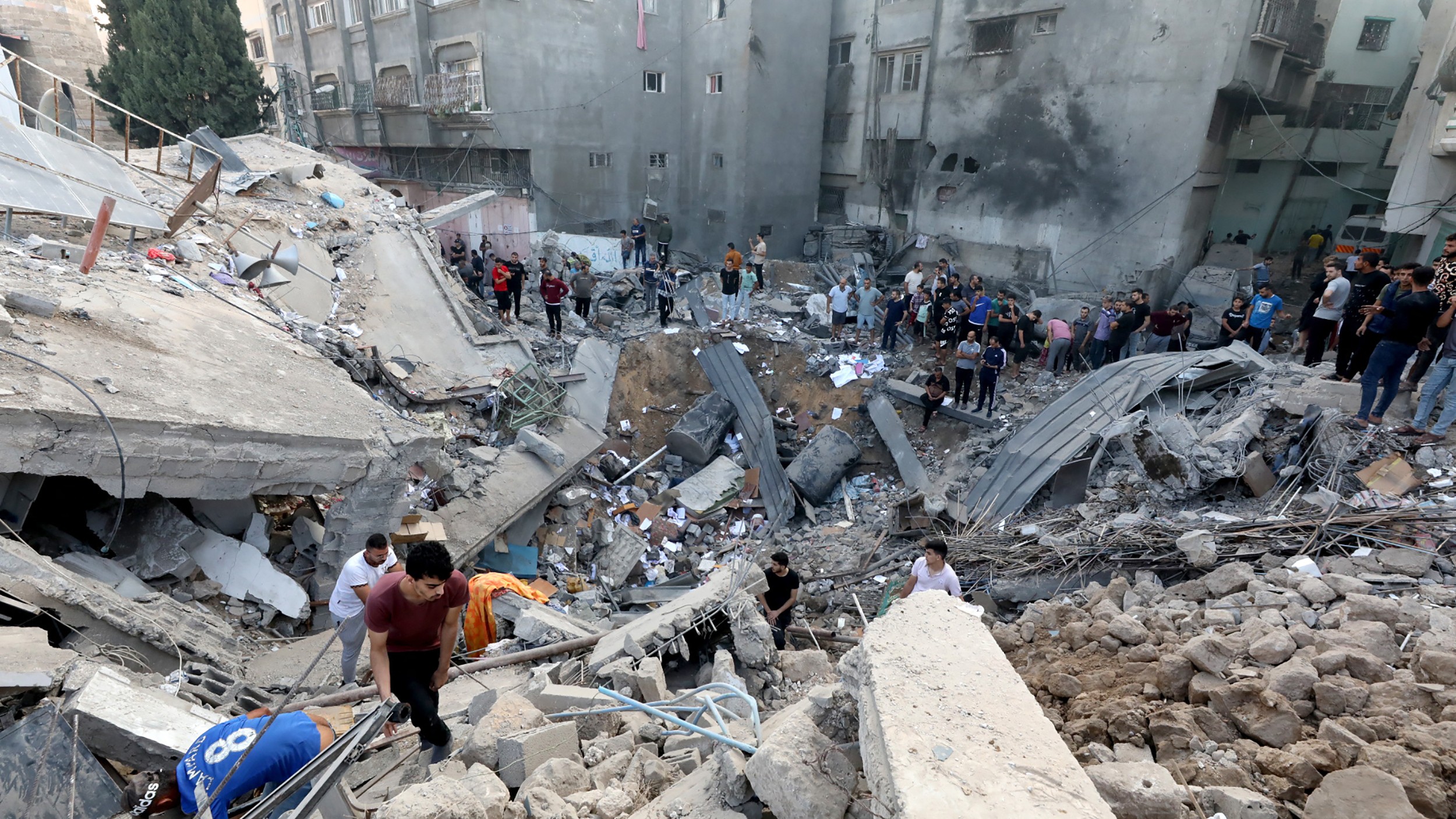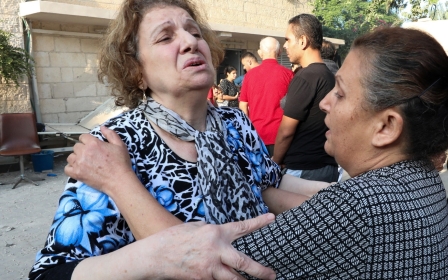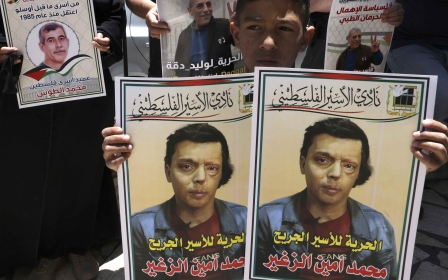Israel-Palestine war: Strike on ancient Gaza church devastates Christian community

For several days, the oldest church in the Gaza Strip has hosted Palestinians hoping to find shelter from relentless Israeli bombing.
But on Thursday night, an air strike on the site in Gaza City killed at least 18 of them and left the coastal enclave's Christian community distraught.
Israel hit a church-run social services building adjacent to the main part of the 1,600-year-old Church of Saint Porphyrius with two strikes, according to an witness.
“Most of Gaza’s Christians have sought refuge in churches because they have nowhere else to go,” the witness, who did not want to be named for security reasons, told Middle East Eye. “We were surprised. We did not receive a warning to evacuate.”
“We don’t have internet. We only have electricity when we turn on the generator for two hours when we need to pump water from the well and fill our tanks,” he added.
Around 400 Christians and Muslims forcibly displaced from their homes by Israel’s relentless bombing campaign over the past two weeks were sheltering in the church.
At least 18 people were killed, according to the Palestinian health ministry. Many others are still missing.
The social services building was one of the four buildings belonging to the church complex. The Israeli military said it was striking a military command centre, and part of the church was damaged.
Hostilities began on 7 October, when Palestinian fighters stormed Israeli communities near the Gaza Strip, killing around 1,400 Israelis.
In response, the Israeli military has waged a ferocious bombing campaign, killing more than 4,200 Palestinians and forcing hundreds of thousands to flee the coastal enclave's north.
'What have the Christians done?'
The Church of Saint Porphyrius is the oldest still in use in Gaza, serving the roughly 1,000 Palestinian Christians in the enclave.
It was originally built in 425 CE and named after Saint Porphyrius, the fifth century bishop of Gaza who is credited with bringing Christianity to the city. He is buried in the northeastern corner of the building.
The church was converted into a mosque in the seventh century, before Crusader forces restored it as a church in the mid-12th century.
Follow Middle East Eye's live coverage for the latest on the Israel-Palestine war
Its striking half-domed roof and entrances supported by marble columns make it one of the most iconic buildings in Gaza.
“The church is 2,000 years old and the Israelis struck it,” a survivor at the scene told local media. “There were no weapons in the church, it was sheltering children.”
“The whole building collapsed to the ground. We aren’t able to pull people from under the rubble,” said another man at a nearby hospital treating the wounded.
“Are these the Israelis’ list of targets? The Christians have nothing to do with any of this. What have the Christians done?”
“Enough, enough, by God we are tired,” he added, after tearing his T-shirt in exasperation.
Last week, the church took to Facebook to address false social rumours that the church had been attacked.
But Thursday night's attack was not the first time Israel targeted the church while civilians were seeking sanctuary.
During the 2014 Gaza war, Israeli shelling partially damaged the building as 2,000 people (mostly women and children) slept in the courtyards and corridors there.
On Friday, the Greek Orthodox Patriarchate in Jerusalem issued a strong condemnation of the Israeli attack.
'Are these the Israelis’ list of targets? The Christians have nothing to do with any of this'
It said: "Targeting churches and their institutions, along with the shelters they provide to protect innocent citizens, especially children and women who have lost their homes due to Israeli airstrikes on residential areas over the past 13 days, constitutes a war crime that cannot be ignored."
Ramzi Khoury, head of the Higher Committee for Church Affairs in Palestine, described the bombing as part of Israel’s "intentions to annihilate the Palestinian people".
"Targeting places of worship constitutes a war crime, and international law makes it clear that houses of worship may under no circumstances be subjected to attacks," he said.
Middle East Eye propose une couverture et une analyse indépendantes et incomparables du Moyen-Orient, de l’Afrique du Nord et d’autres régions du monde. Pour en savoir plus sur la reprise de ce contenu et les frais qui s’appliquent, veuillez remplir ce formulaire [en anglais]. Pour en savoir plus sur MEE, cliquez ici [en anglais].





